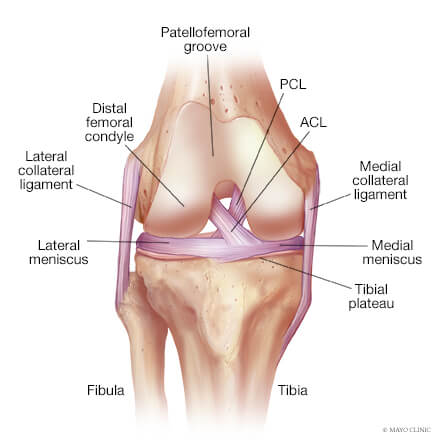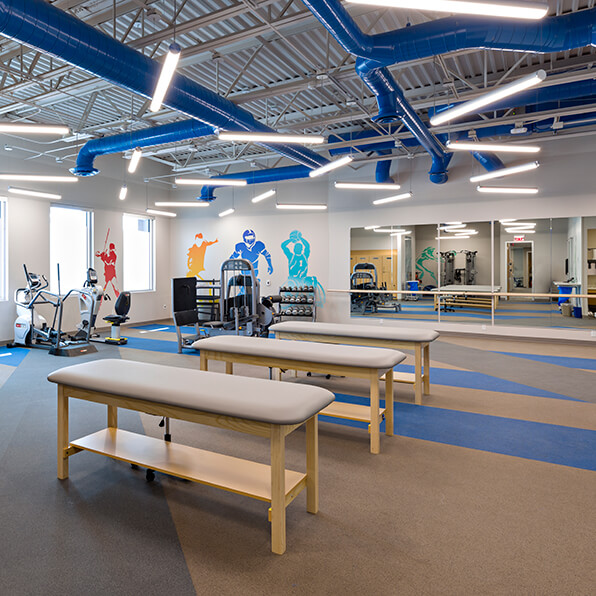
An ACL injury is a tear or sprain of the anterior cruciate ligament (ACL) — one of the major ligaments in your knee. Ligaments are strong bands of tissue that connect one bone to another. The ACL, one of two ligaments that cross in the middle of the knee connecting the thigh bone (femur) to the shinbone (tibia), help stabilize the joint. ACL injuries most commonly occur during sports that involve sudden stops, changes in direction, and jumping— such as soccer, football, basketball, volleyball, and downhill skiing. Many people hear or feel a “pop” in the knee when an ACL injury occurs. The knee feels unstable and may be too painful to bear weight. Swelling typically occurs within hours of the injury because the joint fills with fluid or blood.
Treatment may include rest, rehabilitation and activity limitations, or surgery to replace the torn ligament. Prevention programs to correct strength deficits and imbalance, along with improved cutting and landing mechanics, may reduce the risk of ACL injury. Wearing a knee brace doesn’t appear to prevent ACL injury or reduce the risk of recurring injury after surgery.
ACL injuries often happen during sports and fitness activities that can put stress on the knee:
- Sudden change of direction (cutting)
- Pivoting with your foot firmly planted
- Landing awkwardly from a jump
- Stopping suddenly
- A direct blow to the knee


